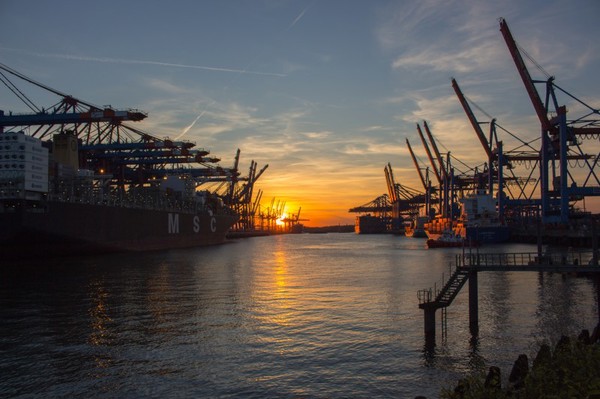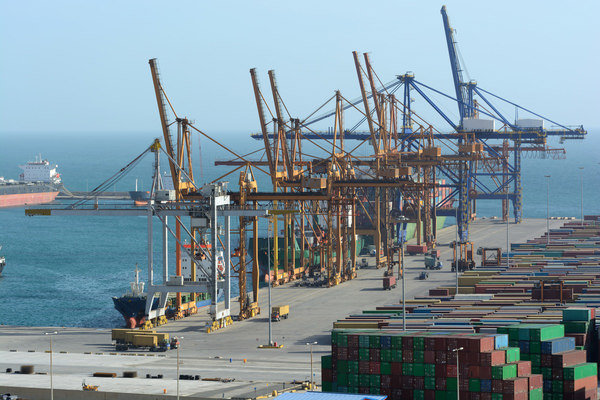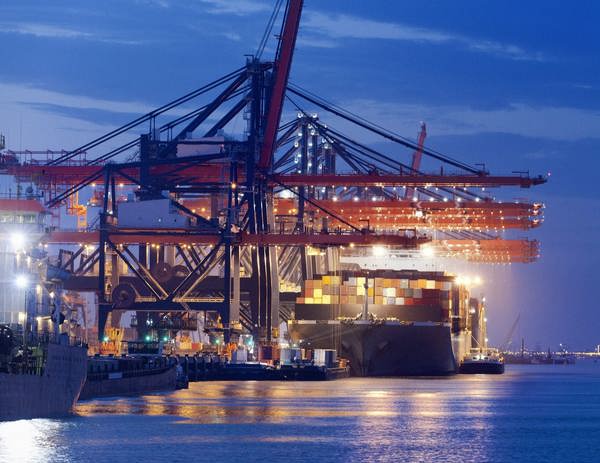Europe & Africa Market Update 17 May 2024
Bunker benchmarks in European and African ports have moved in mixed directions, and one supplier has resumed bunkering in Las Palmas’ outer anchorage.
 PHOTO: Gantry cranes at the Port of Hamburg. Hamburg Port Authority
PHOTO: Gantry cranes at the Port of Hamburg. Hamburg Port Authority
Changes on the day, to 09.00 GMT today:
- VLSFO prices up in Rotterdam and Gibraltar ($1/mt), and down in Durban ($1/mt)
- LSMGO prices up in Gibraltar ($4/mt), and down in Rotterdam ($5/mt) and Durban ($2/mt)
- HSFO prices up in Gibraltar ($1/mt), and down in Rotterdam ($1/mt)
Rotterdam's LSMGO has shed $5/mt in the past day, while Gibraltar's LSMGO gained $4/mt. A lower-priced LSMGO stem booked for prompt delivery in Rotterdam has contributed to dragging the benchmark lower in the past day. The diverging price moves have widened Gibraltar’s LSMGO premium over Rotterdam's by $9/mt to $71/mt now.
Bunkering is proceeding normally in nearby Ceuta port. There are eight vessels due to arrive for bunkers today, up from seven yesterday, says shipping agent Jose Salama & Co. A supplier is reporting delays of 4-5 hours at one of the terminals, the shipping agent added.
Bunkering has resumed in Las Palmas’ outer anchorage today after being suspended for nearly four days due to rough weather conditions. A bunker supplier has started offering bunkers in Las Palmas’ outer anchorage amid calmer weather today, a trader said. Meanwhile, bunkering has been running smoothly in the port's more sheltered inner anchorage. Availability is normal across all grades in the port, with recommended lead times of 4-6 days.
Brent
The front-month ICE Brent contract gained $0.52/bbl on the day, to trade at $83.40/bbl at 09.00 GMT.
Upward pressure:
Brent futures remained well-supported after the second consecutive weekly decline in US crude inventories. Commercial crude oil inventories in the US dropped by 2.51 million bbls to 457 million bbls in the week that ended 10 May, according to the US Energy Information Administration (EIA).
A slowdown in US inflation provided additional support to Brent's price. The US Consumer Price Index (CPI), a key indicator to determine inflationary pressures, showed a slower-than-expected growth rate of 0.3% in April.
This news eased oil demand concerns as further growth in inflation could prompt the US Federal Reserve (Fed) to keep interest rates elevated for longer, which in turn could make commodities like oil costlier for non-dollar holders.
“US economic sentiment, buoyed by investors pencilling in two interest rate cuts by the Federal Reserve this year following softer April inflation data, remained centre-stage for the oil complex,” VANDA Insights’ founder and analyst Vandana Hari said.
Downward pressure:
A bearish demand growth projection reported by the International Energy Agency (IEA) capped some of Brent’s price gains.
The Paris-based energy agency sees a major decline in global oil demand growth from 2.3 million b/d in 2023 to 1.1 million b/d this year. This is about 140,000 b/d lower than its last month’s projection.
“Concerns about weaker demand growth forecasts from organisations such as the International Energy Agency,” have continued to add some downward pressure on Brent futures, analysts from Saxo Bank remarked.
By Manjula Nair and Aparupa Mazumder
Please get in touch with comments or additional info to news@engine.online

Contact our Experts
With 50+ traders in 12 offices around the world, our team is available 24/7 to support you in your energy procurement needs.





